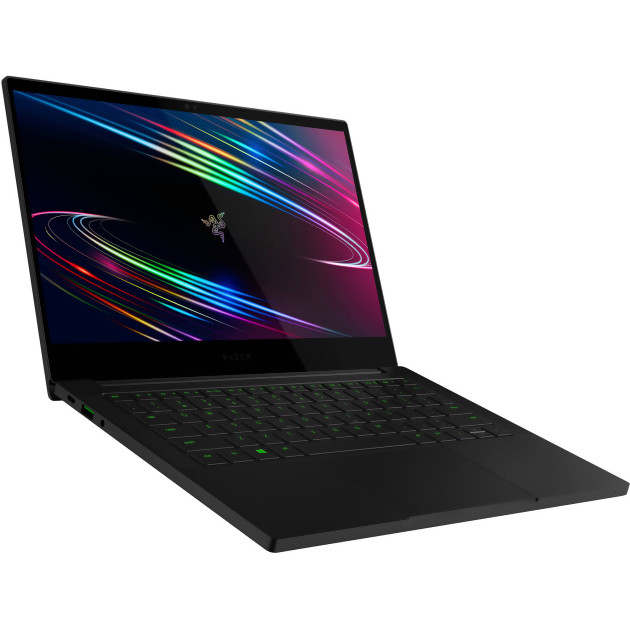We won’t throw stones at you if you have a hard time distinguishing this new Blade Stealth 13 “from the previous model at first glance, and for good reason! The chassis hasn’t actually changed one iota. Diving into the guts. of this new PC, we discover a quad-core Intel Core i7-1165G7 processor offering eight threads and a maximum frequency of 2.8 Ghz. We are therefore clearly in the high end, even if the objective here is to offer autonomy increased thanks to a large chip that does not spin too hard.In fact, under load, this i7 warms up quickly, and its performance is very quickly constrained by the limited cooling capacities offered by the rather cramped chassis of the Blade 13 . This is not really a surprise, insofar as the old models were also very sensitive to these heating problems. The chip will therefore lower the rate and limit its power, in order to curb the thermal releases. The processor is supported. p ar 16 GB of DDR4 RAM, while a 512 GB SSD accommodates the data. In terms of the graphics card, our machine has a GeForce GTX 1650Ti from Nvidia, which allows gaming in 1080p on low-consumption titles such as Counter-Strike, or Fortnite. With its moderate power, and only 4GB of VRAM, it will be necessary to forget the particularly greedy big triple A, unless accepting big concessions at the level of visual options. In addition, be aware that once in play, the cooling system of the Blade Stealth 13 “is particularly noisy.
It’s a shame because our test model is equipped with a major asset: its screen. Razer has equipped the high-end model with an FHD (1080p) 60Hz touchscreen using OLED technology. The result is that we enjoy incredible colors, and a crazy contrast, while having a super thin panel. The image offers exceptional quality, and as the diagonal remains low, we enjoy a fairly incredible image definition, to the point that this OLED panel gives us the impression of being in front of a 2K screen. The latter is also surmounted by a 1MPX webcam (720p) cut for meetings (ZOOM or Teams depending on your favorite software). And to ensure that your interlocutors can hear you, Razer has no less than 4 microphones on the PC. Better, thanks to this OLED screen, the autonomy of the Blade goes up, and we can enjoy about 5-6 hours of autonomy in normal use. Of course, it will be possible to modify certain parameters of the PC in order to maximize its autonomy. Once the brightness is set to a minimum, the RGB Chroma of the keyboard is off and the components put on their “maximum autonomy” setting, you should be able to make the battery last much longer.
Of course, like any concentrate of technology, the Razer Blade Stealth 13 “is not really cheap, but its price range places it within the ultrabook standard. Depending on the model chosen, prices vary between € 1599 and € 2599 , with a plethora of different screens (although only the top of the range has OLED), processors, storage options, memory and with or without a dedicated graphics card. Indeed, those that only have making a GPU can drastically lower the score with models that only have the integrated chipset of the processor (Intel HD Iris).



